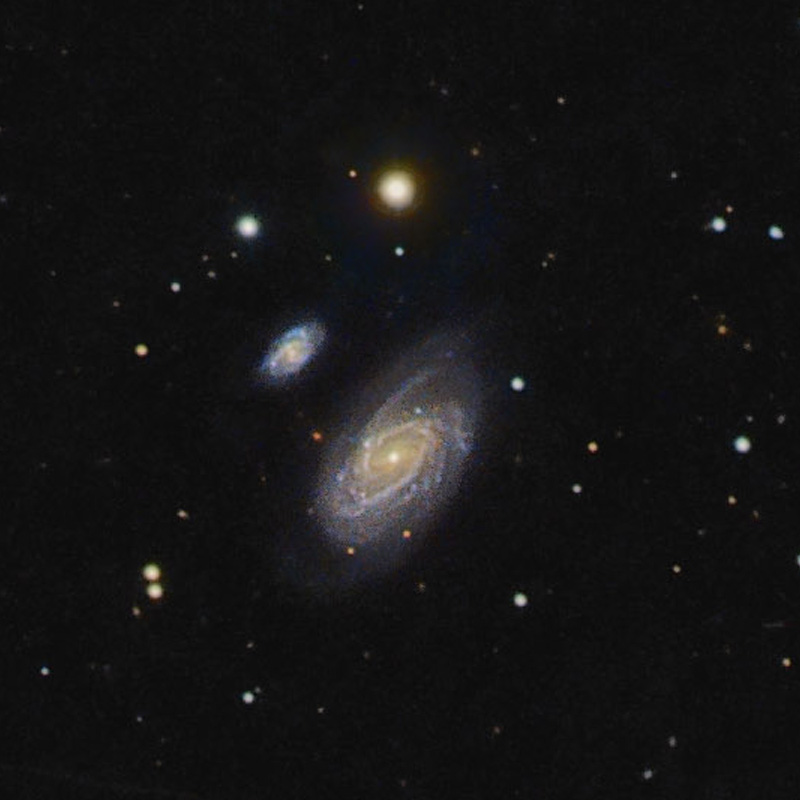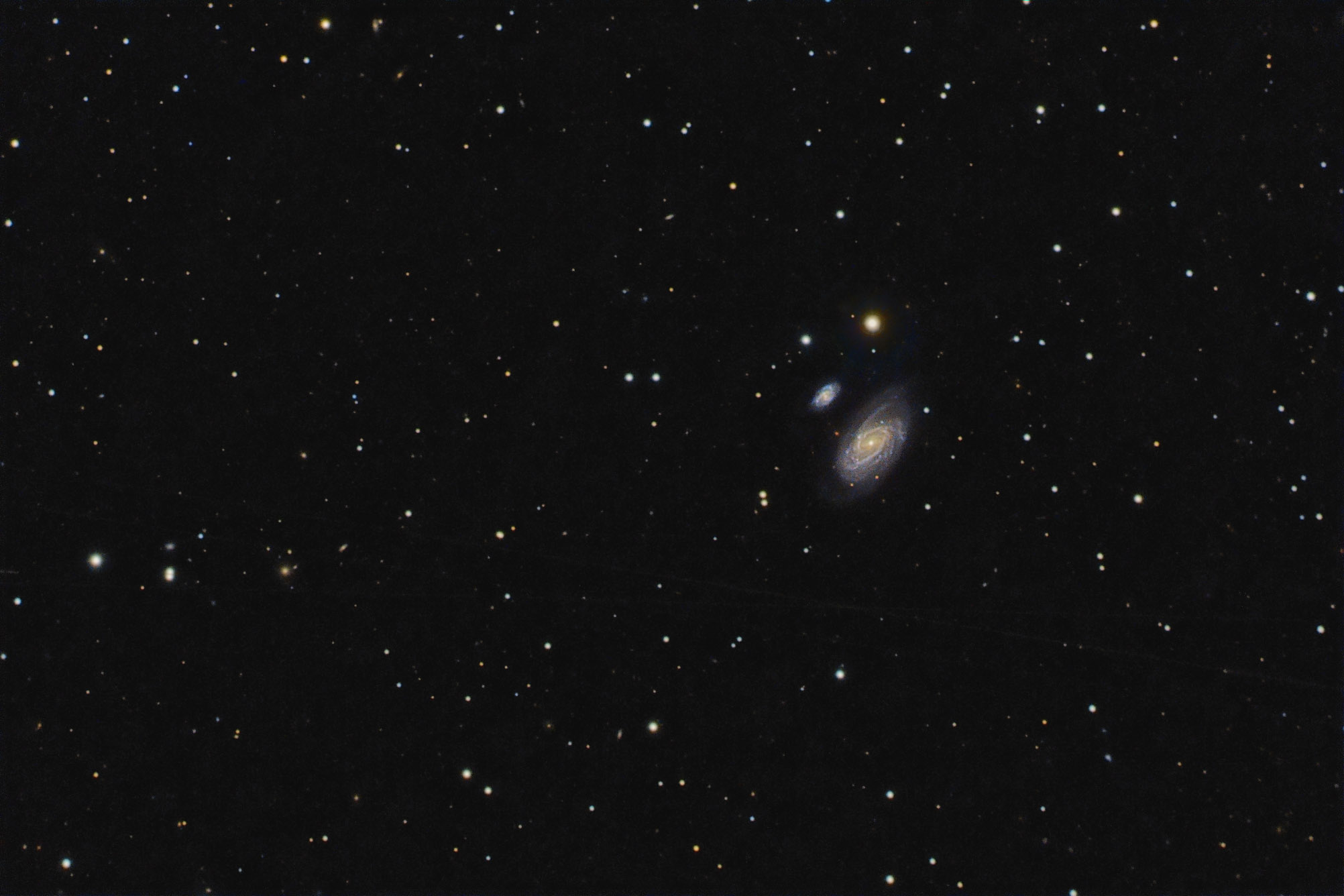| Description | Images |
Object name: ARP304Designation(s): ARP304, NGC1241, NGC1242, Arp 304 consists of two galaxies NGC 1241 and NGC 1242, right to left and a double star to the southeast, NGC 1243. The two galaxies were first seen by William Herschel. John Herschel, unable to see 1242 recorded the double star. Dreyer saw all three but recorded the double star as a nebula. It seems odd that even with a 72" scope (speculum mirror I assume) he couldn't recognize 2 14th magnitude stars 12" apart. The NGC is full of such mistakes, some single stars. They are the two stars southeast of NGC 1242. William Herschel found NGC 1242 on January 10, 1785 and NGC 1243 on December 15, 1786. Neither are in a Herschel 400 observing program. Related Designation(s):2MASS J03111462-0855185, 2MASS J03111923-0854118, 2MASS J03111931-0854087, 2MASX J03111463-0855197, 2MASX J03111933-0854086, 6dF J0311146-085519, AGC 430082, AGC 430083, AKARI J0311151-085522, APMUKS(BJ) B030848.97-090638.0, ARP 304, ARP 304 NED01, ARP 304 NED02, ARP304, GALEXASC J031119.31-085406.6 , GALEXMSC J031119.25-085406.4 , GSC 5294 00840, GSC 5294 00904, HIPASS J0311-08, HOLM 068, HOLM 068A, HOLM 068C, IRAS 03088-0906, IRAS F03088-0906, LDCE 0225 NED008, LGG 084:[G93] 003, LGG 084:[G93] 004, LQAC 047-008 017, MBG 03089-0905, MCG -02-09-011, MCG -02-09-012, NGC 1241, NGC 1241:[KPC2006] 1, NGC 1241:[KPC2013] N1, NGC 1242, NGC1241, NGC1242, NVSS J031117-085508, PGC 011887, PGC 011892, PMN J0311-0855, SSTSL2 J031114.63-085519.2, VLSS J0311.3-0855, VV 334, VV 334a, VV 334b, [PCM2000] 25, [PCM2000] 25 NED01, [PCM2000] 25 NED02, [PVK2003] J047.81125-08.92194 , [PVK2003] J047.83083-08.90222 , [S87a] 14A, [S87a] 14B, [VCV2001] J031114.9-085519, [VCV2006] J031114.7-085519, |

